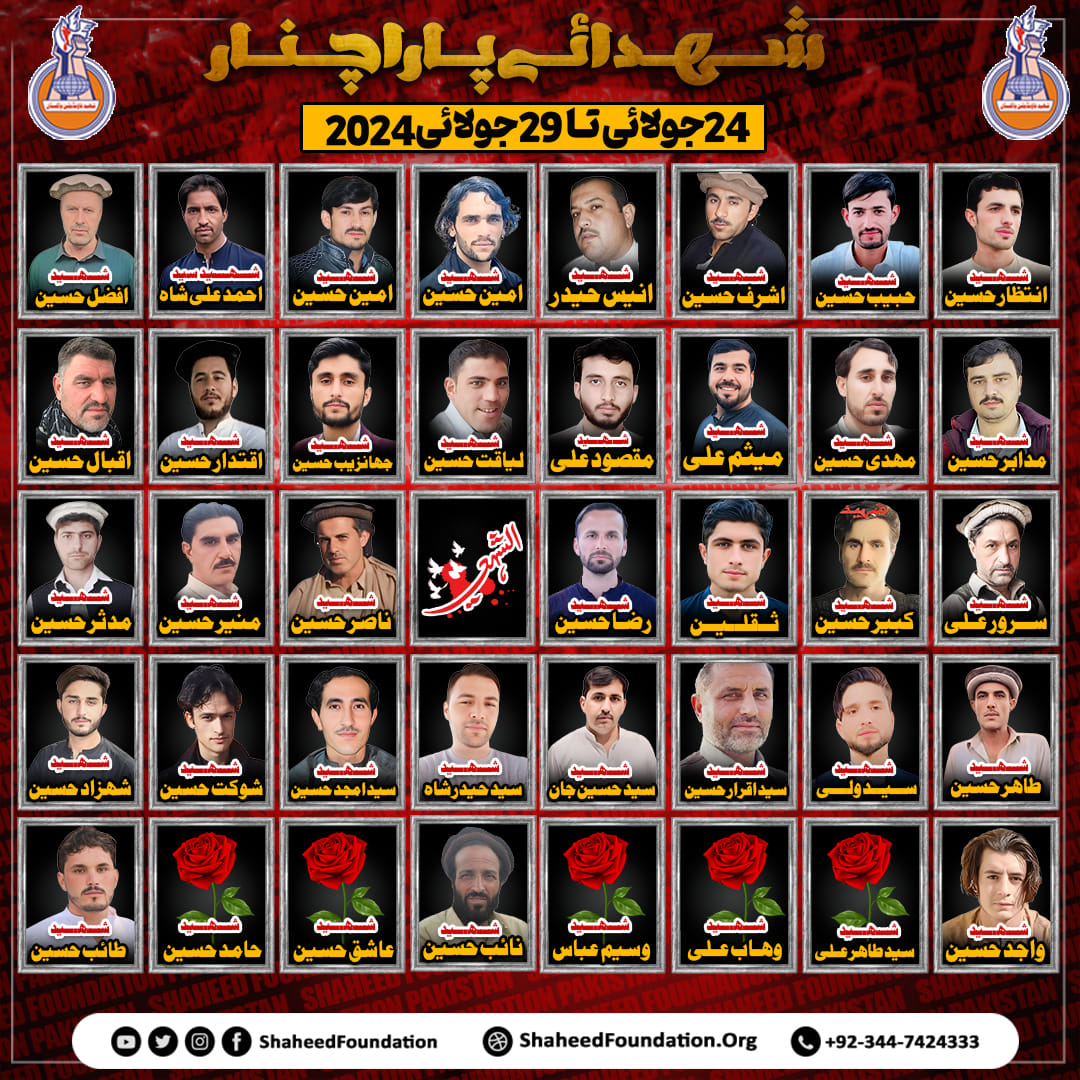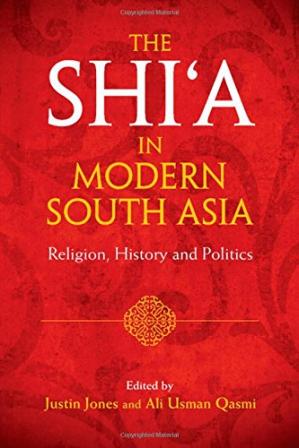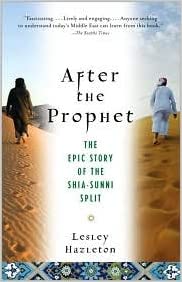Parachinar Conflict Analysis
Caption: A brutal assault in Pakistan’s Parachinar district has left at least 44 Shia Muslims dead, with militant groups using heavy weaponry in the attack. The violence, triggered by pro-Taliban factions, has led to numerous injuries and sparked a major human rights crisis. Social media is ablaze with calls for government intervention and international attention to this escalating violence. The Free Press Journal
The conflict in Parachinar, located in the Kurram District of Khyber Pakhtunkhwa, Pakistan, has sparked a contentious debate: Is it merely a tribal land dispute, or does it signify a broader campaign of Shia genocide? This article delves into the complex socio-political dynamics, the involvement of various militant organizations, and the response of local authorities and international media to the escalating violence. By examining the perspectives of different stakeholders, this piece aims to provide a nuanced understanding of the conflict in Parachinar.
Parachinar under the Siege

Historical Background
Kurram District, especially Upper Kurram, has historically been a Shia-majority region. Its strategic location bordering Afghanistan and the presence of various militant groups have made it a hotspot for sectarian violence. The conflict, which ostensibly began as a land dispute between the Madhgali Kalay and Gulab Kalay tribes, has evolved into a more sinister campaign involving Sunni Deobandi militant organizations targeting the Shia population.
The history of Shia-Sunni relations in the region is marked by episodes of violence and persecution. The Afghan Jihad of the 1980s and the establishment of the Taliban government in Afghanistan exacerbated these tensions, leading to an increase in sectarian attacks. The post-9/11 geopolitical landscape further intensified the conflict, with militant groups exploiting the situation to further their agendas.
Geopolitical Context
Parachinar’s location near the Afghan border gives it significant geopolitical importance. It serves as a strategic transit point for militant groups operating between Pakistan and Afghanistan. The region’s geopolitical significance has attracted the attention of various militant organizations, each with its own objectives and strategies.
The involvement of the Afghan Taliban and its ideological ties with local militant groups like Tehrik-i-Taliban Pakistan (TTP) highlight the broader regional implications of the conflict. These groups aim to establish their dominance in the region, often targeting Shia communities to achieve their goals.
Tribal Disputes
The conflict between the Madhgali Kalay and Gulab Kalay tribes over land is not a new phenomenon. Tribal disputes in the region have a long history, often fueled by competition over resources and historical grievances. However, the current conflict has taken a more violent turn, with militant organizations exploiting these disputes to further their sectarian agendas.
The historical context of tribal disputes in Kurram District provides a backdrop for understanding the current violence. These disputes have often been resolved through traditional mechanisms, but the involvement of external militant groups has complicated the situation, leading to increased violence and casualties.
Shia Genocide Claims
The targeted attacks on the Shia population in Parachinar suggest a broader campaign of genocide rather than mere tribal conflict. The systematic nature of these attacks, the involvement of well-organized militant groups, and the use of heavy weaponry point to a concerted effort to eliminate the Shia community from the region.
Historical precedents of Shia persecution in Pakistan and the current patterns of violence in Parachinar support the claims of genocide. The lack of decisive action by local authorities and the muted response of mainstream media further exacerbate the situation, leaving the Shia community vulnerable and marginalized.
Militant Organizations Involved
Several militant groups are reportedly involved in the violence against Shia Muslims in Parachinar. These include:
Tehrik-i-Taliban Pakistan (TTP)
The TTP is known for its strong anti-Shia stance and has been involved in numerous attacks on Shia communities across Pakistan. Its involvement in Parachinar is part of a broader strategy to establish dominance in the region. The TTP’s tactics include targeted killings, bombings, and attacks on Shia religious gatherings.
Afghan Taliban
The Afghan Taliban’s involvement in Parachinar signifies a broader regional strategy. With ideological ties to the TTP, the Afghan Taliban has supported anti-Shia operations in the region. The group’s presence in Parachinar highlights the interconnected nature of militant activities across the Pakistan-Afghanistan border.
Sipah-e-Sahaba Pakistan
Sipah-e-Sahaba Pakistan, a banned organization notorious for its sectarian violence, continues to operate and propagate anti-Shia sentiments. The group’s involvement in Parachinar is part of its broader agenda to eliminate Shia influence in Pakistan. Despite being banned, Sipah-e-Sahaba Pakistan remains active, often operating under different names.
Lashkar-e-Jhangvi
Another banned militant group with a history of targeting Shia Muslims, Lashkar-e-Jhangvi, has been implicated in numerous attacks in Parachinar. The group’s brutal tactics and sectarian agenda make it a significant threat to the Shia community in the region.
Islamic State Khorasan
The regional affiliate of ISIS, known for its brutal tactics and sectarian agenda, has also been involved in the violence in Parachinar. Islamic State Khorasan’s presence in the region adds a new dimension to the conflict, with the group using extreme violence to further its objectives.
Weaponry and Tactics
The militant groups involved in the Parachinar conflict have utilized heavy weaponry, including rockets and missiles, in their attacks on Shia-majority areas. These tactics have resulted in significant casualties and destruction, highlighting the severity of the conflict. The use of such weaponry indicates a well-planned and coordinated effort to target the Shia population.
Casualties and Humanitarian Impact
The toll of the conflict has been severe. Local authorities report that, to date, 35 Shia individuals and 8 Sunni individuals have been killed. Dr. Mir Hasan Jan, the medical superintendent of Kurram District Hospital, highlighted the dire situation, with over 200 injured and six individuals in critical condition. The Shaheed Foundation has documented 40 Shia deaths between July 24 and July 29, underscoring the targeted nature of these attacks.
Healthcare Crisis
The healthcare facilities in Kurram District are ill-equipped to handle the influx of casualties. The lack of medical supplies, personnel, and infrastructure has exacerbated the crisis, leaving many injured individuals without proper care. Local hospitals, such as Kurram District Hospital, are overwhelmed, and NGOs are struggling to provide the necessary support.
Shaheed Foundation Report

Details List of Shia-killings in Parachinar during 24-07-2024 to 29-07-2024
The Shaheed Foundation’s report on the Parachinar conflict provides a detailed account of the Shia deaths and injuries. The foundation’s documentation underscores the targeted nature of the violence, with a significant number of casualties resulting from militant attacks on Shia-majority areas.

List of 40 Shia Muslims of Parachinar were killed from 24 July to 29 July – Shaheed Foundation claims…. Image credit to SFP
Local Leaders’ Perspectives
Local leaders and activists have voiced strong criticism against the authorities and militant organizations. Their perspectives provide valuable insights into the dynamics of the conflict and the perceived lack of action by the authorities.
Hasan Arif’s Viewpoint
Hasan Arif, President of the Imamia Students Organization, has accused international and regional jihadi takfiri terrorist organizations of orchestrating the attacks. He criticizes the lack of action against those spreading hate and issuing fatwas against Shia Muslims. Arif’s viewpoint highlights the role of external actors in fueling the violence.
Syed Azhar Ali Shah’s Critique
Syed Azhar Ali Shah, Head of the Imamia Council Peshawar, has condemned the authorities for failing to arrest those calling for jihad against Shia Muslims. His critique underscores the perceived inadequacy of the government’s response to the conflict.
Mufti Fazal Hamdard’s Analysis
Mufti Fazal Hamdard, a Sunni scholar, has pointed to the role of takfiri groups in inciting violence. He suggests that the land dispute is a pretext for a broader agenda to dominate the region. Hamdard’s analysis provides a Sunni perspective on the conflict, highlighting the sectarian motives behind the violence.
Media Coverage
The coverage of the conflict in mainstream Pakistani media has been criticized for its ambiguity and reluctance to address the sectarian nature of the violence. Reports often reduce the conflict to a land dispute, neglecting the organized campaign of genocide against Shia Muslims. In contrast, international media have provided slightly more nuanced coverage, acknowledging the involvement of militant groups in the attacks.
Public Discourse
Public opinion on the Parachinar conflict is divided. Within the Shia community, there is a strong sense of injustice and a demand for greater protection and accountability. Social media platforms have become a battleground for discourse, with activists and community leaders using these platforms to raise awareness and call for action.
Government Response
The Pakistani government’s response to the conflict has been widely criticized. Despite the severity of the violence, the authorities have been slow to implement effective security measures or hold perpetrators accountable. The lack of decisive action has left the Shia community feeling vulnerable and abandoned.
International Response
International organizations and foreign governments have largely remained silent on the Parachinar conflict. Greater international media coverage and pressure are needed to highlight the plight of the Shia community and push for more robust responses from the Pakistani government.
Potential Solutions
To address the crisis in Parachinar, several steps are necessary:
Increased Security Measures
The government must enhance security in Shia-majority areas to protect civilians from militant attacks. This includes deploying additional security forces and improving surveillance and intelligence capabilities.
Accountability and Justice
Authorities should take decisive action against those issuing fatwas and spreading hate speech against Shia Muslims. This includes arresting and prosecuting individuals and organizations involved in inciting violence.
Humanitarian Aid
Immediate medical and humanitarian assistance is needed for the injured and displaced individuals. This includes providing medical supplies, personnel, and infrastructure to local hospitals and supporting NGOs working in the region.
International Attention
Greater international media coverage and pressure can help highlight the plight of the Shia community and push for more robust responses from the Pakistani government. International organizations should also provide humanitarian aid and support for conflict resolution efforts.
Interfaith Dialogue
Promoting interfaith dialogue and understanding can help bridge the sectarian divide and foster a more inclusive society. This includes organizing community events, educational programs, and dialogue initiatives to promote tolerance and understanding.
Conclusion
The conflict in Parachinar is a complex interplay of tribal disputes and a targeted campaign against the Shia population. The involvement of various militant organizations and the documented evidence of targeted killings suggest that this is more than just a tribal war—it is a manifestation of a broader sectarian genocide. The lack of decisive action by local authorities and the muted response of the mainstream media further exacerbate the situation, leaving the Shia community vulnerable and marginalized. By acknowledging the true nature of the conflict and taking concrete steps to address it, the cycle of violence in Parachinar can be broken, paving the way for lasting peace and stability in the region.
FAQs
What is the main cause of the conflict in Parachinar?
The conflict in Parachinar is driven by a combination of tribal disputes and a targeted campaign against the Shia population by militant organizations.
Which militant groups are involved in the Parachinar conflict?
The main militant groups involved include Tehrik-i-Taliban Pakistan (TTP), Afghan Taliban, Sipah-e-Sahaba Pakistan, Lashkar-e-Jhangvi, and Islamic State Khorasan.
What has been the humanitarian impact of the conflict?
The conflict has resulted in significant casualties, with over 35 Shia individuals killed, 200 injured, and many displaced. Local healthcare facilities are overwhelmed, and there is a critical need for medical and humanitarian assistance.
How has the Pakistani government responded to the conflict?
The government’s response has been criticized for being slow and inadequate. There has been a lack of effective security measures and accountability for those inciting violence.
What can be done to resolve the conflict in Parachinar?
To resolve the conflict, the government needs to enhance security measures, hold perpetrators accountable, provide humanitarian aid, and promote interfaith dialogue. International attention and support are also crucial.
Why has the international community remained largely silent on the Parachinar conflict?
The international community’s silence may be due to a lack of awareness and media coverage. Greater international attention and pressure are needed to address the crisis and support the Shia community in Parachinar.
Links:
Understanding Genocide: Is Shia Muslim community facing ‘Genocidal Campaign’? By Abbas Zaidi
Unveiling the Ongoing Persecution of Shia Communities in Pakistan: A Silent Crisis






